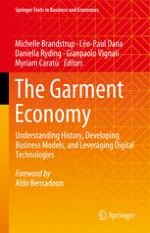This book introduces the reader to the business of clothes, with flashbacks into the past, business models of today, and ideas for a sustainable future. Historical perspectives discuss the cotton industry in India, Bangladesh, Greece, and Central Asia, which help trace the evolution of the clothing industry during the 20th century. Chapters also discuss fashion marketing, greenwashing, blockchain in the fashion supply chain, social media, sustainability issues, and sensory models. Several business models are explained; topics covered include blue ocean strategy, the unstitched market, the luxury sector, access-based consumption, and ethics. Among other topics explored are the future retail experience, consumer value creation, technology, and the impact of virtual atmospheres. The book also includes helpful case studies in understanding the country and culture-specific nuances of the clothing business.
